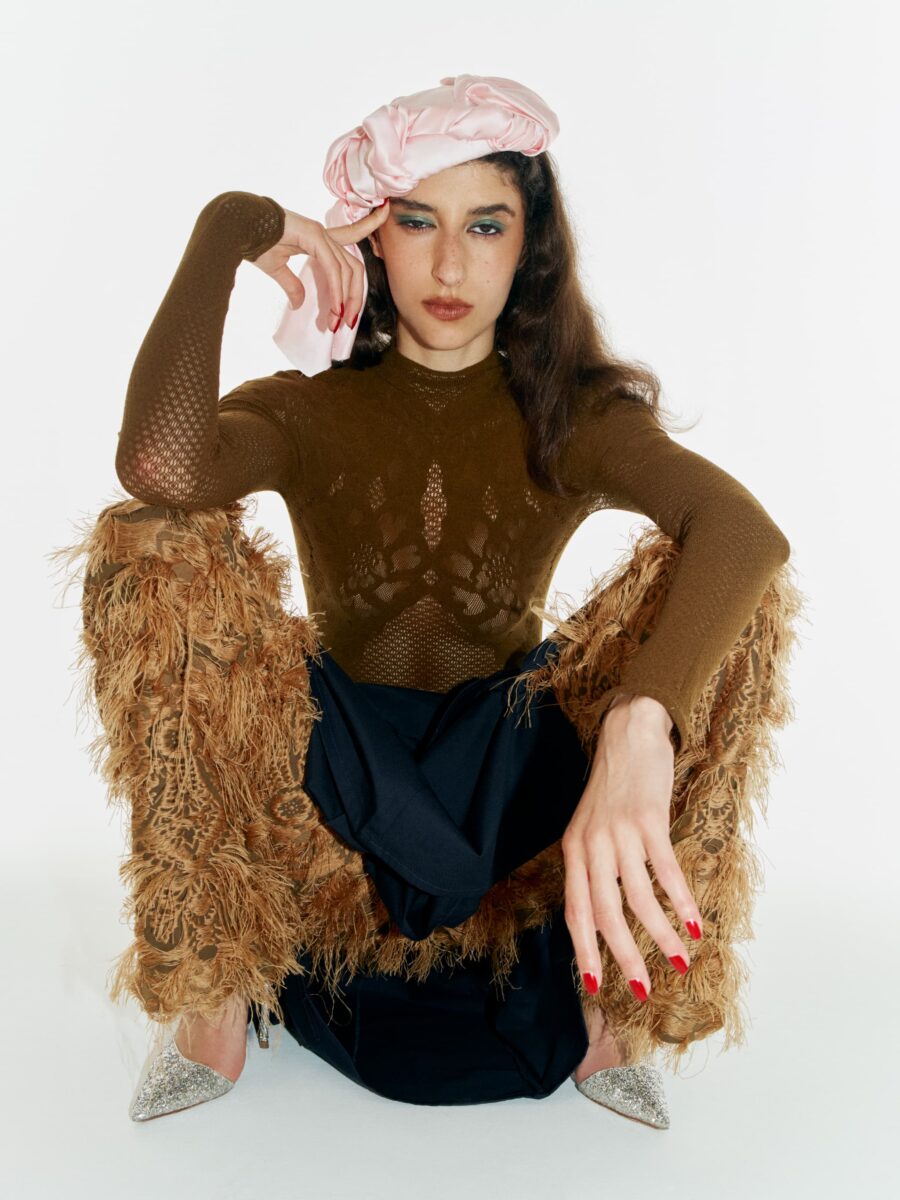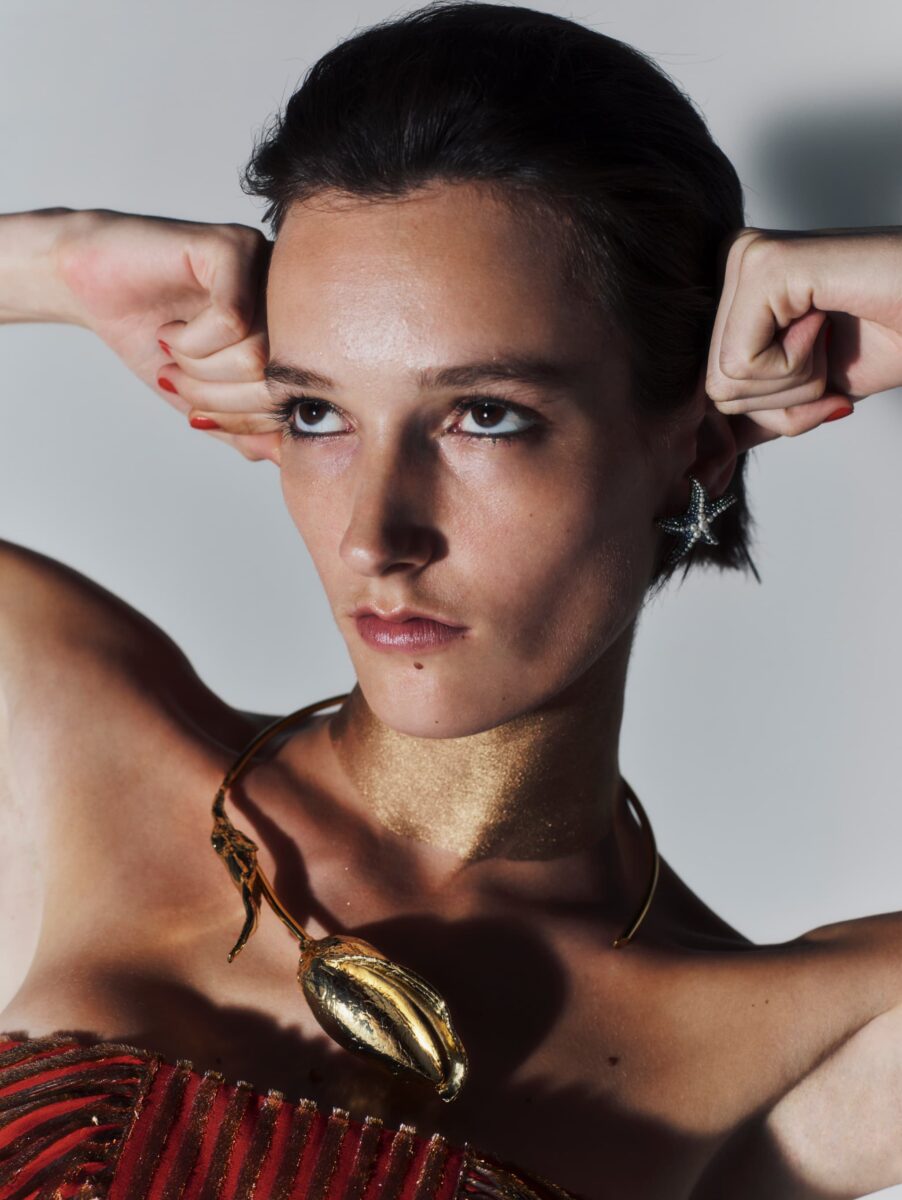2025.05.26
The exhibition “Seeing Sound, Hearing Time” by Ryuichi Sakamoto, from our own perspectives.
text: Mizuki Takeuchi, Arka Toni, and conomi matsuura
cover credit: Installation view of the exhibition “Ryuichi Sakamoto | seeing sound, hearing time” at the Museum of Contemporary Art Tokyo, 2024.
Ryuichi Sakamoto + Shiro Takatani, async–immersion tokyo, 2024
©2024 KAB Inc. Photo: Takeshi Asano
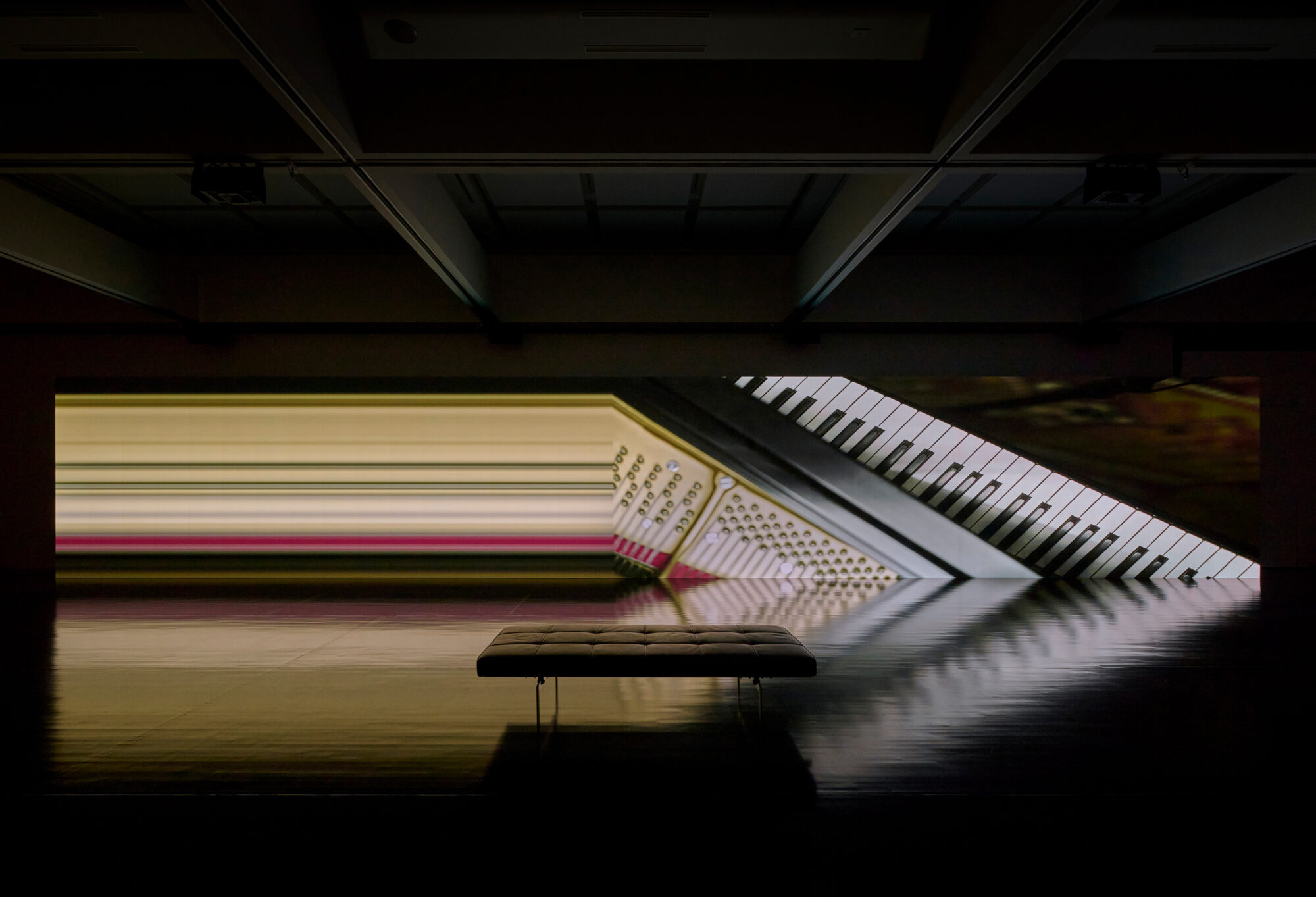
Is it possible to “see” sound? Is it possible to “hear” time?
Ryuichi Sakamoto: Seeing Sound, Hearing Time” will be held at the Museum of Contemporary Art Tokyo for three months from December 2024, and will soon come to an end. It is the largest scale solo exhibition tracing the path of Ryuichi Sakamoto. Every day, a large number of people lined up around the Gendai Art Museum. The vibrations of sound echoing through the exhibition space and the numerous installations that visualize the invisible flow of time sharpen visitors’ senses and invite them to a new experience.
In this article, “we” who visited the exhibition describe our impressions in the form of an essay. How do we see and hear the sound and time that have no form? Only those who visited the exhibition will be able to understand.
Translated with DeepL.com (free version)
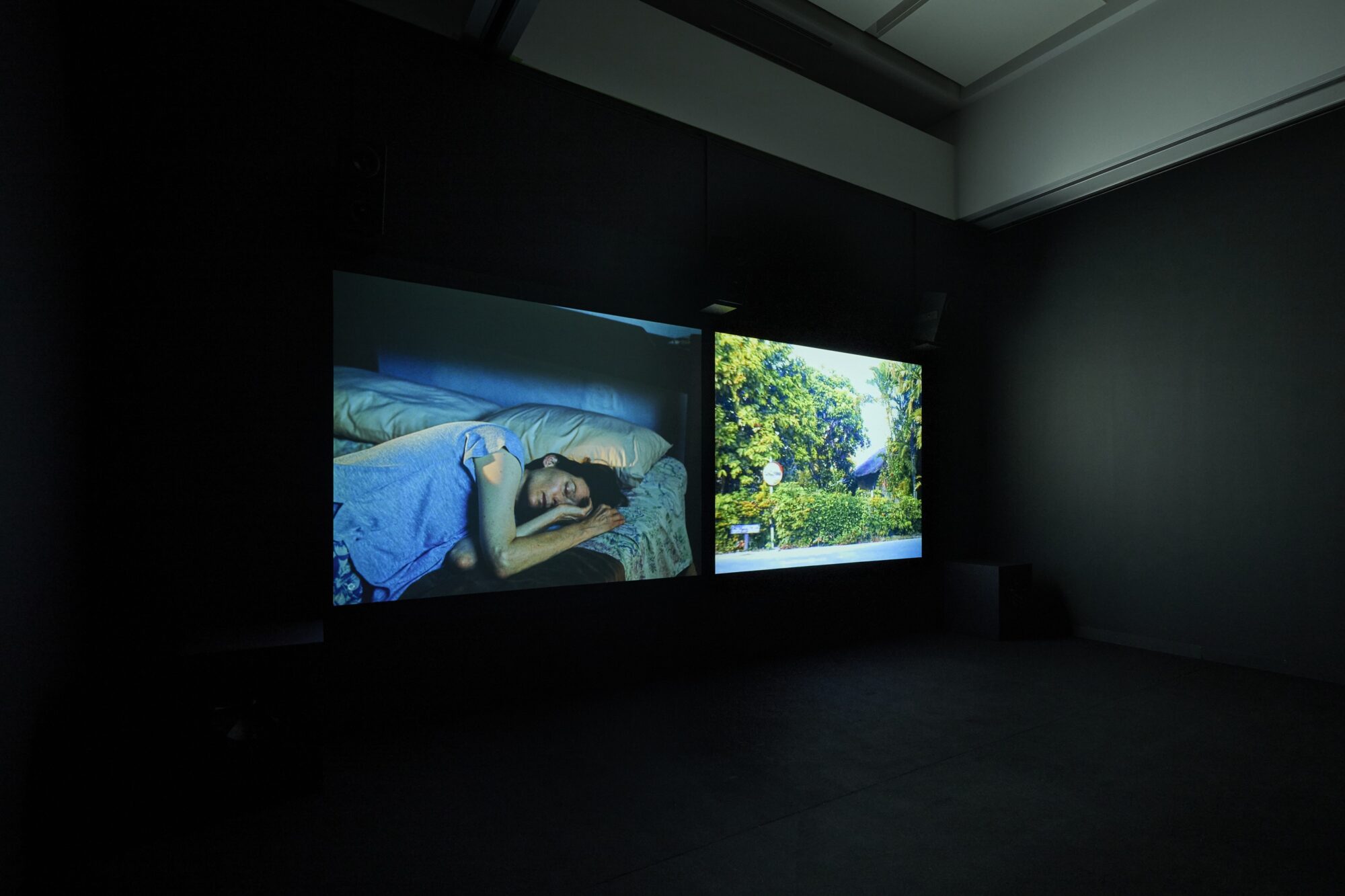
Installation view of the exhibition “Ryuichi Sakamoto | seeing sound, hearing time” at the Museum of Contemporary Art, 2024.
Ryuichi Sakamoto + Apichatpong Weerasethakul, async–first light, 2017
Apichatpong Weerasethakul, Durmiente, 2021
©2024 KAB Inc. Photo: Takeshi Asano
Invite you to the physical memories that lie deep within each individual.
Mizuki Takeuchi
The exhibition includes works such as TIME TIME (2024) and LIFE-WELL TOKYO (2024) that incorporate water, fog, and natural fluctuations. Some of the notes and books tracing Ryuichi Sakamoto’s thought are related to Andrei Tarkovsky, a film director whom he admires. Tarkovsky, known as the “poet of visuals” for his pursuit of lyrical visual beauty, was an artist who frequently used water and other natural phenomena as motifs, and it may be fair to say that some of the works in this exhibition pay homage to him as well.
As I sat on a couch in the exhibition room and watched the organically moving fluid with sound, I was reminded of the first time I saw “Solaris”. This work, too, is filled with beautiful shots of nature, and the use of water is a particular highlight of the work. A fantastical lake with dancing water plants, a mysterious sea covering the stars in the distance, and the effective sound of water arranged like a dramatic accompaniment…as I gazed at the various forms in which water, a familiar substance, appeared, I felt as if I were in a movie theater in Shibuya, staring at the screen, I remembered that I was somehow nostalgic for the days of my distant hometown, which existed only in my memory.
This exhibition, too, seems to be a collection of multifaceted works that seem to invite viewers to enter their deepest physical memories through the shimmering of water and fog. Although it is tempting to record the works with photos or videos, I dare you to surrender yourself to the sounds and images in front of you without opening the device at hand. Before you know it, you may find yourself at a place where your own memories lie, transcending time and space.
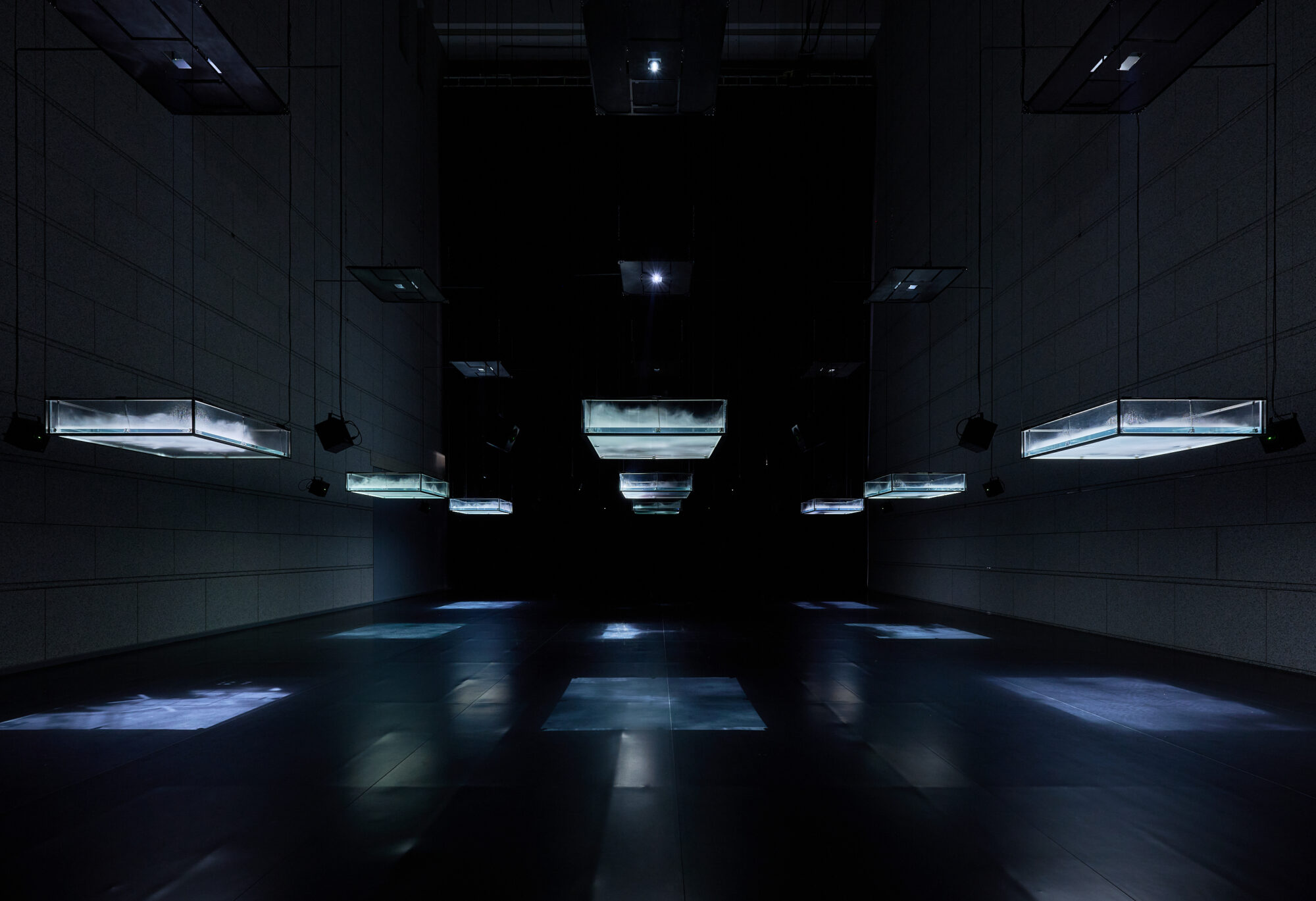
Installation view of the exhibition "Ryuichi Sakamoto | seeing sound, hearing time" at the Museum of Contemporary Art Tokyo, 2024.
Ryuichi Sakamoto + Shiro Takatani, LIFE–fluid, invisible, inaudible..., 2007
©2024 KAB Inc. Photo: Takeshi Asano
Becoming one with the “nature” of the impermanence of all things.
Arka Toni
Although I am a musician, I have not lived through Ryuichi Sakamoto’s life, nor do I know that much about him. However, I felt as if I could learn a little more about him through this exhibition. In this exhibition, the question of “What is time?” was set as a very abstract, grand, and familiar question, and the works exhibited were mainly from the year 2000 onward.
In his works, the “living time” in individual flow, not the “time” that everyone shares on a clock, was aesthetically manifested. On the other hand, looking at his works from a slightly different angle, I could sense the keyword “nature”.
My impression of him, based on the few works I know of, is that in his attempts at techno music during the YMO era, he reproduced the yawning of grooves generated by the body using numerical values, and his attitude toward perceiving nature from a computational point of view was evident. I could sense such a point of view in the works exhibited this time, but while at that time he regarded “nature” as an object, in the works exhibited this time, he seemed to be trying to connect with “nature” and with the “nature” in the flow of time.
And as many of you may have had the same impression, the works exhibited this time were all somewhat “death” like. (To die is to return from “society” to “nature,” as the body, which has carried social symbols as a human being, becomes a mere material.
I felt that this is linked to the connection of his works with “nature. Rather than the dichotomy of “human” as subject and “nature” as object, he is continuously united with the impermanence of “nature” and himself. I believe that this is his personal and poetic confrontation with life and death, and that this is the thought that he has arrived at.
I was able to see the traces of his life.

Installation view of the exhibition "Ryuichi Sakamoto | seeing sound, hearing time" at the Museum of Contemporary Art Tokyo, 2024.
Ryuichi Sakamoto + Shiro Takatani, async–immersion tokyo, 2024
©2024 KAB Inc. Photo: Takeshi Asano
What did he “see” through “sound” all his life.
conomi matsuura
Ryuichi Sakamoto left a lasting impression on me as he approached the ice floes with his recorder and was excited to be able to capture the wonderful sound. This is one of the scenes from his documentary “Ryuichi Sakamoto: CODA”. In other scenes, he was composing or writing with a difficult face, but he was smiling innocently like a child. I thought he was pure in sound.
On the other hand, the music he makes is lofty, and to be honest, as a layman, I can’t say that I understand all of his music as well as I should. However, when I stepped into this exhibition hall, I could once again feel the pure exploration of his sound that I saw in that documentary.I was bathed in the music and thoughts he has played in the past. The liquid crystal display that emerged from the blurring brightness showed only the shimmering of water. By placing oneself in the midst of this, one can imagine what he was “seeing” through the “sound” that he had spent his entire life exploring.
Passing through various exhibition rooms, large and small, and enjoying the installation, I entered a small dark room in one corner, where his studio was on display. A peaceful room with swaying trees. The sunlight shining in reflected warmly on the room.I thought about the fact that he, who had been involved in a wide range of activities beyond being a musician, had spent his last years peacefully playing the piano in his room.
He would be the kind of person who could look at epoch-making events and flowers blooming on the side of the road in the same way. He is now part of history, part of nature. I wonder if he is still playing a note somewhere.
Ryuichi Sakamoto’s exploration of music and art continued to deepen throughout his life. This exhibition, “Seeing Sound, Hearing Time,” traces Sakamoto’s creative path and provides us with an opportunity to experience his questions about “sound” and “time” as our own. The lingering echoes of his contemplation will continue to reverberate quietly in our daily lives even after we leave the exhibition space.
What kind of world can we hear and what kind of time can we see by coming into contact with his music and philosophy? Beyond visiting the exhibition, each journey of “sound” and “time” will continue.
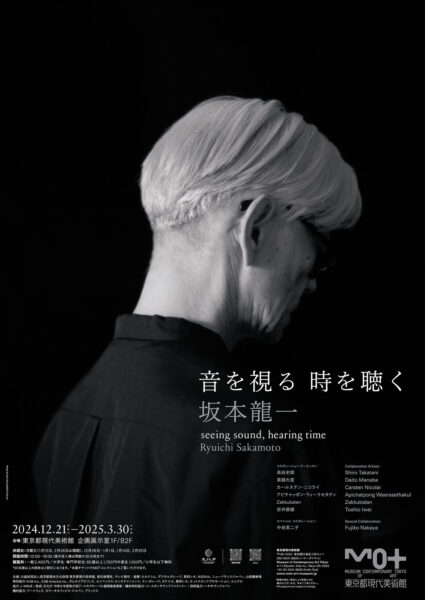
exhibition
Ryuichi Sakamoto|Seeing sound Hearing time
Date: December 21st 2024 – March 30th 2025
Opening hours: 10:00〜18:00
Closed on Monday
Place: Museum of Contemporary Art Tokyo
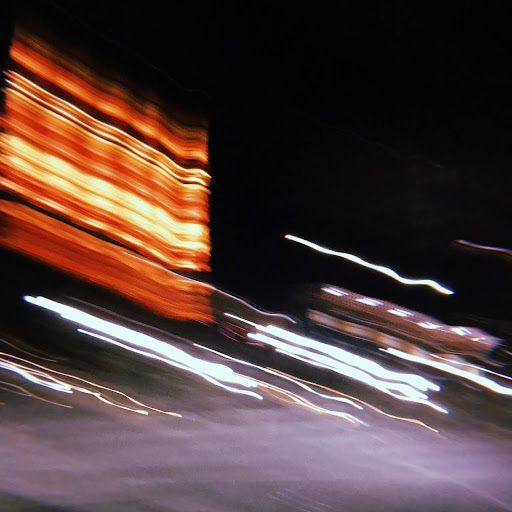
Writer
Mizuki Takeuchi
Writer/Editor. Interested in the interplay between technology and culture, and the humanity that breathes within it.

Writer
Arka Toni
Tokyo-based spatial musician/designer/art director. While creating ambient/new age music, he also designs interiors, lighting, candles, and graphics. With the themes of space and time, phenomenon and representation, he creates transversal creations that are not bound by the boundaries of design and art, and continues to search for both public and private approaches to the world.
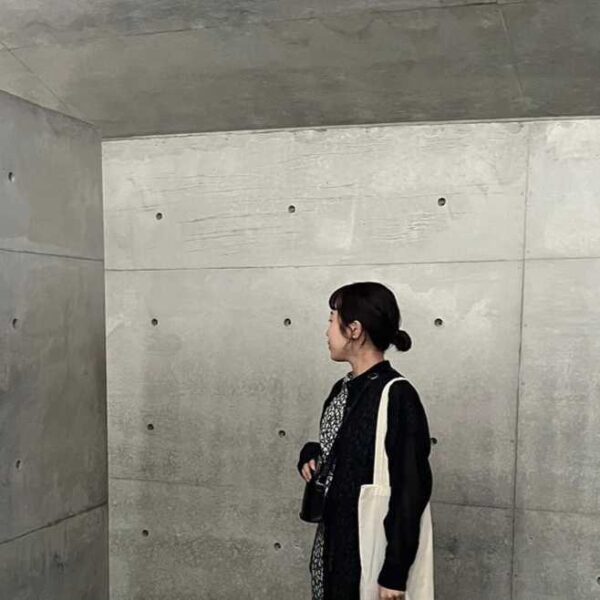
Writer
conomi matsauura
Writer and editor. After working for a publishing company specializing in fashion and culture in Tokyo, she moved to her hometown of Nara. While traveling back and forth between the city and the countryside, she is currently exploring the idea of a society that naturally recycles.
